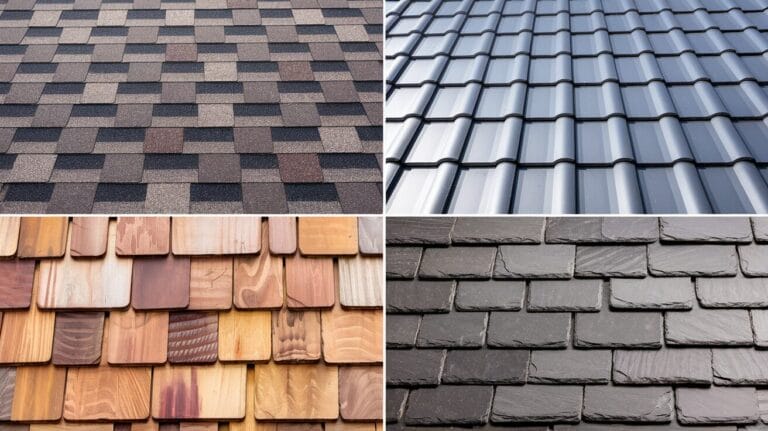
Roof replacement is a significant home improvement project that involves completely removing the existing roof and installing a new one. Over time, roofs can deteriorate due to wear and tear, weather damage, age, or other factors. When a roof reaches the end of its lifespan or becomes severely damaged, a replacement is necessary to ensure the safety and integrity of the home.
Roof replacement involves several steps and considerations to ensure a successful and long-lasting result:
- Assessment and Inspection
- Roofing Material Selection
- Removing Old Roof
- Repairing the Underlayment
- Installing New Roofing Material
- Flashing and Ventilation Installation
- Final Inspection and Cleanup
- Cost Considerations
- Benefits of Roof Replacement
Assessment and Inspection
The first step in roof replacement is to assess and inspect the current roof to determine its condition and identify any underlying issues. A professional roofing contractor will thoroughly examine the roof, looking for signs of damage, leaks, rot, or structural problems. They may also assess the overall stability of the roof and check for any potential hazards. This assessment helps in determining the scope of the replacement project and the necessary repairs or improvements.
Roofing Material Selection
Once the assessment is complete, the next step is to select the appropriate roofing material for the replacement. There are various options available, including asphalt shingles, metal roofing, tile, slate, and more. The choice of material depends on factors such as the climate, budget, architectural style of the home, and personal preferences. It is essential to choose a high-quality and durable roofing material that can withstand the local weather conditions and provide long-term protection.
Removing Old Roof
Before installing the new roof, the old roof needs to be thoroughly removed. This involves stripping off the existing shingles, underlayment, and any other components of the roof. The removal process may vary depending on the type of roofing material, but it typically involves using tools and equipment to carefully detach and dispose of the old roof. It is crucial to remove all the old materials to create a clean and stable base for the new roof.
Repairing the Underlayment
After removing the old roof, the underlayment is inspected for any damage or deterioration. The underlayment is a crucial layer that provides an additional barrier against moisture and helps to keep the roof watertight. If any sections of the underlayment are damaged, they need to be repaired or replaced before proceeding with the installation of the new roof. This step ensures that the new roof has a solid and secure foundation.
Installing New Roofing Material
With the underlayment in good condition, the installation of the new roofing material can begin. The process varies depending on the type of material chosen, but it generally involves laying down the new shingles, tiles, or panels according to the manufacturer’s guidelines and best practices. It is important to ensure proper alignment, secure fastening, and adequate ventilation to maximize the longevity and performance of the new roof.
Flashing and Ventilation Installation
During the roof replacement process, flashing and ventilation components are installed to ensure proper sealing and prevent moisture buildup. Flashing is used to seal joints, transitions, and vulnerable areas of the roof, such as around chimneys, vents, and skylights.
Adequate ventilation is essential to maintain airflow and prevent the buildup of heat and moisture in the attic, which can lead to roof damage and other issues. Proper installation of flashing and ventilation elements helps to enhance the overall performance and durability of the new roof.
Final Inspection and Cleanup
Once the installation is complete, a final inspection is conducted to ensure that the new roof meets the necessary standards and that all components are properly installed and functioning. The inspection involves checking for any cosmetic or functional issues, as well as ensuring that the roof is watertight and secure.
Any necessary adjustments or touch-ups are addressed at this stage. After the inspection, the construction site is thoroughly cleaned up, and any debris or leftover materials are removed.
Cost Considerations
The cost of roof replacement can vary depending on factors such as the size and complexity of the roof, the chosen roofing material, the contractor’s labor costs, and any additional repairs or improvements needed. It is essential to obtain multiple quotes from reputable roofing contractors and carefully evaluate the pricing and included services.
While cost is an important consideration, it is crucial to prioritize quality and choose a contractor with a solid reputation and experience in roof replacement.
Benefits of Roof Replacement
Increase Home Value
Replacing an old or damaged roof can significantly increase the value of a home. A new roof enhances the aesthetics and improves the curb appeal of the property, making it more attractive to potential buyers. Additionally, a new roof provides peace of mind to potential homeowners as it eliminates the need for immediate repairs or replacements.
Improved Energy Efficiency
A new roof can improve the energy efficiency of a home by providing better insulation and reducing heat transfer. Properly installed roofing materials and insulation help to maintain a comfortable indoor temperature and reduce reliance on heating and cooling systems. This can result in lower energy bills and a more sustainable and eco-friendly home.
Enhanced Curb Appeal
The roof is a prominent feature of any home’s exterior and significantly contributes to its overall curb appeal. A new roof can transform the appearance of a home, giving it a fresh and updated look. Whether it’s choosing a new color or upgrading to a more modern roofing material, a roof replacement can enhance the overall aesthetics and make a positive impression.
Enhanced Protection and Durability
One of the primary goals of a roof replacement is to provide enhanced protection and durability. New roofing materials are designed to withstand weather elements, including rain, wind, snow, and sun exposure. A new roof ensures better water-tightness, reduces the risk of leaks and water damage, and offers improved resistance against potential structural issues.
Reduced Maintenance and Repair Costs
Old roofs often require frequent repairs and maintenance to keep them in good condition. By replacing an old roof with a new one, homeowners can significantly reduce the need for ongoing maintenance and repair costs. A new roof is less likely to experience issues such as leaks, cracks, or shingle damage, resulting in lower long-term costs and fewer headaches for homeowners.



